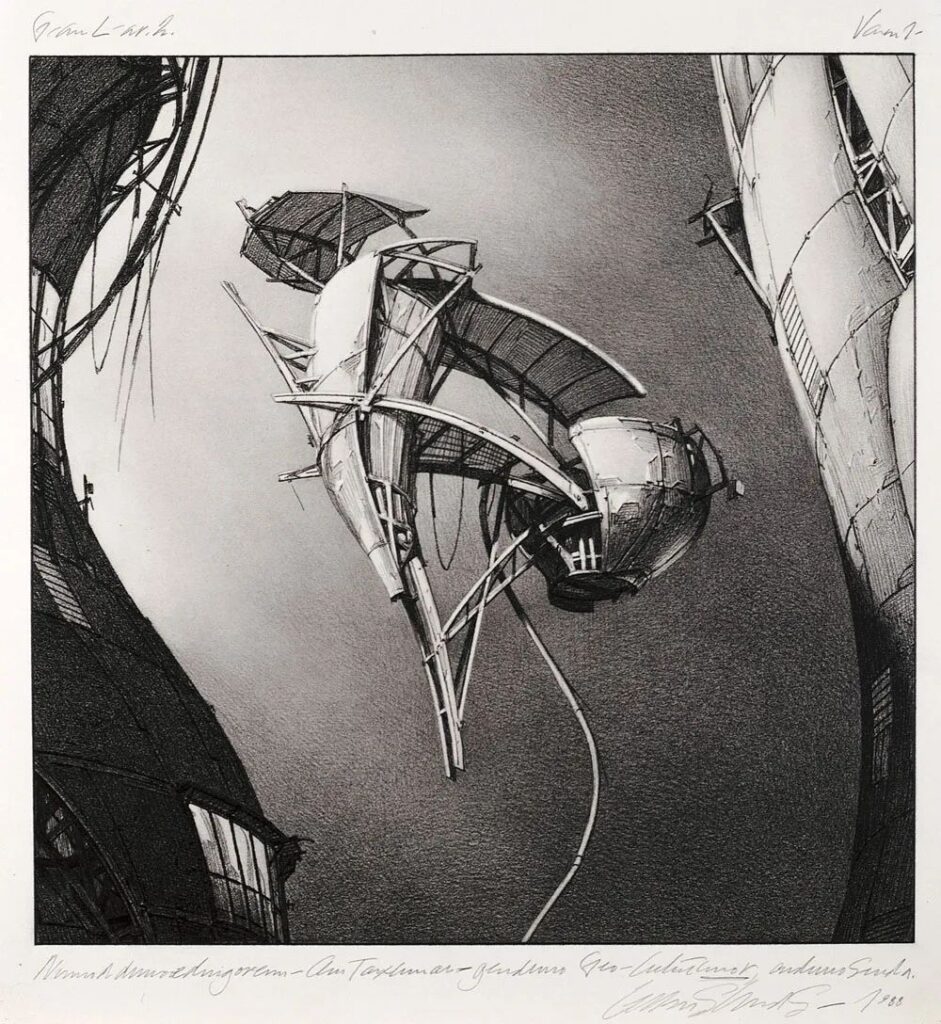
Architecture, at its core, is a profound expression of the human experience. It bridges the gap between our inner world of ideas and the physical reality we inhabit. Few have articulated this connection as eloquently as the visionary architect and artist Lebbeus Woods. In a poignant reflection on his lifelong pursuit, Woods unveils the intricate dance between timeless mathematical principles and the ceaseless evolution of urban landscapes.
The Quest for Timeless Design
Woods begins by acknowledging his enduring fascination with uncovering the “architectonic, design means for expressing [to] myself and others both those timeless qualities of the human mind.” This quest speaks to a fundamental desire in architecture and art: to capture and manifest the eternal aspects of human consciousness through physical form.
The reference to “noble and perfect forms of mathematics, geometry, and works of art and architecture we call classical” evokes the long-standing tradition in Western architecture of seeking ideal proportions and harmonious ratios. From the golden ratio employed in ancient Greek temples to the precise geometries of Renaissance cathedrals, architects have long drawn inspiration from mathematical principles believed to reflect a deeper cosmic order.
These timeless forms represent more than mere aesthetic choices. They embody what Woods calls “qualities of the human mind,” suggesting that our appreciation for certain proportions and geometries is hardwired into our cognitive architecture. By incorporating these elements into design, architects tap into a universal language that resonates across cultures and epochs.
The Pulse of Urban Life
In stark contrast to these immutable forms, Woods introduces the concept of “ephemeral qualities of mind derived from moment to moment experience.” Here, he shifts focus from the eternal to the fleeting, from the universal to the particular. This duality acknowledges that while we may be drawn to timeless ideals, our lived experience is characterized by constant change and adaptation.
Woods finds the epitome of this ephemeral quality in “the great urban centers, the cities, where there is no perfection, only a continuum, an evolution of myriad forms.” This vivid description captures the essence of urban life – a ceaseless flow of people, ideas, and structures in perpetual transformation. Cities are living organisms, constantly reinventing themselves in response to technological, social, and economic forces.
The Paradox at the Heart of Creativity
At first glance, these two aspects of design – the timeless and the ephemeral – might seem irreconcilable. How can architecture simultaneously embody eternal principles and respond to the ever-changing pulse of urban life? Woods proposes that this apparent contradiction is not a flaw, but the very essence of human creativity.
He describes these as “paradoxical qualities and lay foundation for an inner human conflict and struggle from which human creativity is born.” This insight is profound. It suggests that the tension between our yearning for perfection and our lived experience of impermanence is the crucible in which innovative design is forged.
This internal struggle manifests in various ways in contemporary architecture. We see buildings that juxtapose classical proportions with modern materials, or structures that use timeless geometric principles to create fluid, adaptable spaces. The most compelling architectural works often find ways to honor both our connection to eternal forms and our need for spaces that evolve with us.

Implications for Modern Design
Woods’ reflection challenges us to reconsider our approach to architecture and urban design. In an age of rapid technological advancement and global interconnectedness, how do we create spaces that respect timeless principles while embracing the dynamism of modern life?
- Adaptive Classicism: Rather than viewing classical forms as rigid and unchanging, we might explore ways to make them responsive to contemporary needs. This could involve using traditional proportions in modular, reconfigurable structures.
- Biomimicry and Sacred Geometry: By studying the mathematical patterns found in nature – from the Fibonacci sequence in plant growth to the fractal structures of coastlines – designers can create spaces that feel both timeless and organically adaptive.
- Participatory Urban Design: Embracing the “continuum” of city life means involving communities in the ongoing evolution of their built environment. This could manifest as buildings with interchangeable facades or public spaces designed to be easily repurposed.
- Digital Craft: Advanced computational design and fabrication techniques allow for the creation of highly complex geometries that can embody both mathematical precision and organic fluidity.
- Temporal Architecture: Instead of striving for permanence, some projects might intentionally embrace impermanence, with structures designed to evolve or even decompose over time.
The Human Element
Ultimately, Woods’ words remind us that architecture is fundamentally about the human experience. The forms we create are expressions of our consciousness, reflections of how we perceive and interact with the world around us.
By acknowledging both our attraction to timeless ideals and our lived experience of constant change, we open ourselves to a richer, more nuanced approach to design. This perspective encourages us to create spaces that not only shelter and function but also inspire and evolve.
As we face unprecedented global challenges – from climate change to rapid urbanization – this holistic understanding of design becomes ever more crucial. The architectures of the future will need to be both grounded in enduring principles and infinitely adaptable, providing stability amidst chaos and flexibility in the face of uncertainty.
Woods’ insight into the paradoxical nature of human creativity offers a valuable framework for approaching these challenges. By embracing the tension between the timeless and the ephemeral, between perfection and evolution, we can create built environments that truly reflect the complexity and wonder of the human experience.
In conclusion, Lebbeus Woods’ reflection serves as both a philosophical musing and a call to action. It invites architects, designers, and all those who shape our built environment to dive deep into the dualities that define human consciousness. By doing so, we may just unlock new realms of creativity, crafting spaces that resonate with both our eternal nature and our ever-changing world.